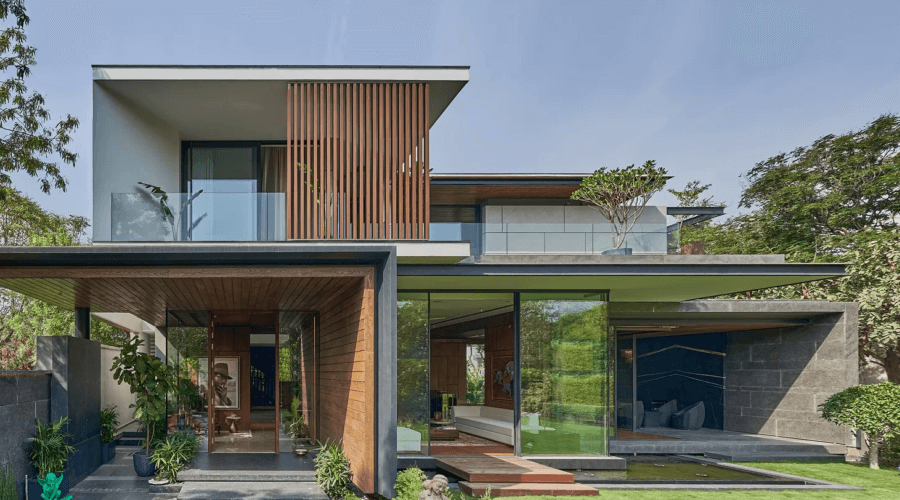Imagine living in a house that creates as much energy as it uses—quiet, comfortable, and cheap to run. That is the promise of sustainable homes designed for net-zero living. Thanks to better building science, smarter materials, and abundant solar, eco-friendly housing is quickly moving from niche to normal. In this guide, you’ll learn what “net-zero” really means, how these homes are built, what they cost, and the practical steps to get there—whether you’re planning a new build or upgrading the home you already love.
U.S. DOE: What a Zero Energy Ready Home includes
What Is a Net-Zero Home?
A net-zero energy home produces (on site or through verified off-site renewables) as much energy over a year as it consumes. The recipe is simple to state and precise to execute: first reduce energy demand to the lowest practical level, then offset the rest with renewables. The ENERGY STAR Zero Energy Ready program outlines performance targets for builders, while the World Green Building Council explains how net-zero buildings cut operational carbon.
In practice, net-zero begins with the “fabric first” approach: a high-performance envelope, airtight construction, and efficient systems. Then solar PV (and sometimes batteries) supply clean power. Compared with a code-minimum house, a net-zero design can slash annual utility use dramatically, often without sacrificing aesthetics or comfort.
High-Performance Envelope: Where Efficiency Starts
The building envelope is the backbone of eco-friendly housing. Prioritize airtightness, continuous insulation, and quality windows. Resources from the U.S. Department of Energy explain why thermal bridging and air leaks drive energy waste. Triple-pane windows with low-E coatings, properly detailed air barriers, and insulated slabs or basements work together to keep heat where it belongs.
Ventilation is equally important. Balanced systems with heat/energy recovery (HRV/ERV) provide fresh air without big heating or cooling penalties. The EPA recommends mechanical ventilation for healthier indoor air. Compared with older homes that “leak to breathe,” modern net-zero designs are tight, then they ventilate right—quietly, cleanly, and efficiently.
ArchDaily: Energy-efficient residential case studies
Smart Systems: Heat Pumps, Controls, and Hot Water
Once the envelope is dialed in, choose systems that sip energy. Cold-climate air-source heat pumps or ground-source systems deliver high performance and all-electric comfort. The National Renewable Energy Laboratory (NREL) documents how heat pumps cut energy use versus conventional HVAC. Add a smart thermostat and room-by-room zoning to match comfort with occupancy.
For hot water, heat-pump water heaters provide big efficiency wins. Induction cooktops improve indoor air quality and reduce load spikes. Whole-home energy monitors (and smart plugs) reveal where watts go, so you can trim waste with data—not guesswork. Compared to a typical gas furnace + standard water heater combo, this all-electric stack integrates smoothly with rooftop solar and batteries.
On-Site Renewables and Storage
Solar PV is the most common renewable for net-zero living. A right-sized array can offset most household use; batteries add resilience and time-shift solar into evening hours. For solar fundamentals—system sizing, inverters, and net metering—see the Solar Energy Industries Association (SEIA) 101. If your roof isn’t ideal, consider ground mounts or community solar where available (DOE Community Solar).
Smart inverters, load control, and EV chargers can coordinate so the house charges cars when solar is abundant and rates are low. The Rocky Mountain Institute (RMI) explores how homes interact with cleaner grids. Compared with fossil-fueled generators, battery backup is silent, immediate, and integrates seamlessly into all-electric designs.
Costs, Incentives, and Long-Term ROI
Do sustainable homes cost more? Usually yes—modestly upfront—but they pay back via lower bills and better comfort. Builders often cite a 4–10% incremental cost for net-zero-ready features, though numbers vary by market. Incentives, tax credits, and utility rebates can narrow that gap. Start with the ENERGY STAR incentives hub and your local utility’s rebate portal. Many regions also reward electrification, heat pumps, and envelope upgrades.
For homeowners, total cost of ownership matters more than sticker price. Lower monthly bills can offset a slightly higher mortgage, while comfort, resilience, and future resale value add non-cash returns. The International Energy Agency shows how efficient buildings shield owners from energy-price volatility—an underappreciated benefit.
Internal: Net-zero financing & incentives guide (example.com)
Health, Comfort, and Indoor Air Quality
Net-zero isn’t just about kilowatt-hours. Airtight construction + filtered ventilation produces cleaner indoor air by design. See the EPA IAQ portal for pollutant sources and strategies. Consistent temperatures, minimal drafts, and low noise turn daily life into a calmer experience—especially valuable if you work from home or have small children.
Material choices matter too: low-VOC paints, formaldehyde-free cabinetry, and solid-surface floors reduce off-gassing. A simple comparison: old, leaky homes “breathe” through cracks that pull in dust, humidity, and outdoor pollution. Net-zero homes ventilate intentionally through high-quality filters—healthier, fresher, and more controllable.
Real-World Examples You Can Learn From
Need proof it works in the real world? Browse the DOE Tour of Zero for detailed case studies across climates. Architects and builders share specs, blower-door results, and system choices. Internationally, the WorldGBC library highlights net-zero projects in dense cities and challenging sites.
For design inspiration, visit ArchDaily and search “zero energy.” For product standards, Passive House Institute and PHIUS certifications push envelopes to ultra-low loads—an ideal launchpad for net-zero.
Step-by-Step: How to Move Your Home Toward Net-Zero
1) Audit first. Commission a home energy assessment with blower-door testing and infrared imaging. The DOE Energy Saver site explains what to expect.
2) Fix the envelope. Air-seal, insulate, upgrade windows, and detail the attic and rim joists. Tackle bulk water management (flashing, drainage plane) so durability matches performance.
3) Electrify the systems. Replace fossil furnaces with heat pumps; pick heat-pump water heaters and induction for cooking. Add smart controls.
4) Add solar + storage. Size PV after efficiency work; consider batteries for resilience. Use an NREL solar calculator or resource and speak with qualified installers.
5) Optimize behavior. Use energy monitors, adjust schedules, and shift high-load tasks to sunny hours. Tiny habits—like line-drying or smart EV charging—compound.
Internal: Green remodel roadmap & contractor checklist (example.com)
Common Challenges—and How to Solve Them
“It’s too expensive.” Upfront costs exist, but incentives + efficiency often neutralize the premium. Plan early; value-engineer finishes to protect performance features first.
“My climate is too hot/cold.” High-performance envelopes and cold-climate heat pumps work from Minnesota to Miami. See ASHRAE Advanced Energy Design Guides for climate-specific targets.
“I can’t put solar on my roof.” Explore ground mounts, carport canopies, or community solar (DOE). Efficiency alone can cut loads 40–60%—a huge win even before PV.
“I’m worried about grid outages.” Battery storage + all-electric design can island critical loads (fridge, lights, Wi-Fi). See NREL on energy storage for options and trade-offs.
Where Policy and Market Trends Are Headed
Policy is accelerating adoption. Many cities and states are tightening energy codes, offering electrification rebates, or piloting zero-emission building standards. The IEA policy database tracks global moves, while Rewiring America outlines homeowner-friendly electrification pathways.
On the market side, buyers increasingly value energy performance and resilience. Appraisers are learning to capture efficiency features; some lenders offer green mortgages. As manufacturing scales and builders gain experience, expect costs to drift down—much like solar did over the last decade.
Design Inspiration: Luxury, Comfort, and Sustainability
Net-zero does not mean austere. You can pair performance with beautiful materials and thoughtful details. Look to Dezeen’s zero-energy projects for sophisticated design language and to Green Building Advisor for constructability tips. Biophilic touches—daylight, views, plants—boost wellbeing and productivity, turning efficient shells into homes you love.
For kitchens and baths, choose WaterSense fixtures, induction cooktops, and quiet, efficient appliances. Tie everything together with a smart-home platform that schedules loads, manages comfort, and shows your energy balance in real time.
Conclusion: Make the Net-Zero Move—One Smart Step at a Time
The future belongs to sustainable homes that are comfortable to live in, resilient during outages, and inexpensive to operate. Whether you’re breaking ground on a new build or planning a phased retrofit, net-zero living is a practical goal. Start with the envelope, electrify your systems, then let solar and storage close the loop. Use the resources above, lean on certified pros, and make data-driven choices. The payoff is a healthier home, lower bills, and a lighter footprint—proof that truly eco-friendly housing can be both beautiful and brilliantly functional.




